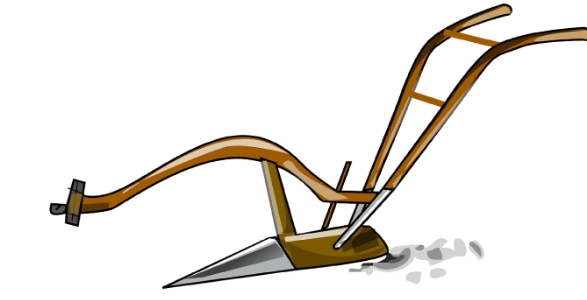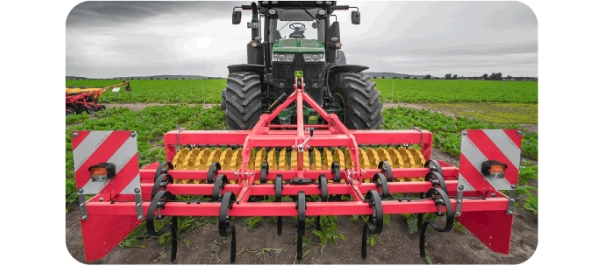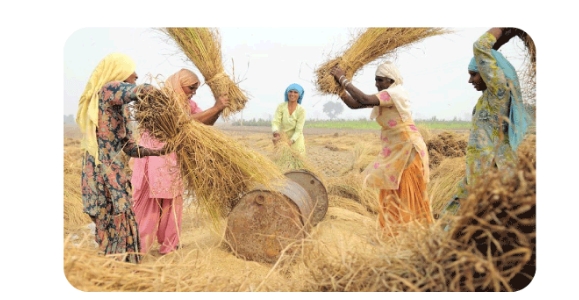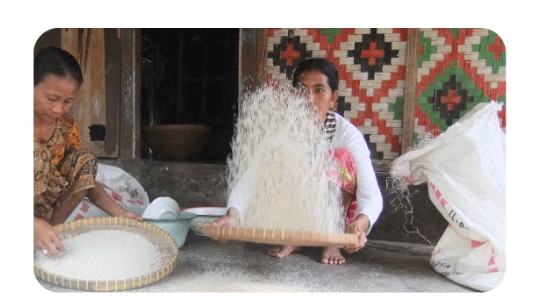
CBSE Class 8 Science Notes Chapter 1: The notes from Class 8 Science Chapter 1 aid students in understanding a number of fundamental ideas that highlight the significance of crop management and production. Students can streamline their preparation by understanding the conceptual meaning of every topic with the help of our Crop Production and Management Class 8 Notes.
The Class 8 Chapter 1 Notes give pupils a thorough understanding of how to study effectively and gain a clear understanding of every topic covered in the Chapter 1 syllabus. A reliable resource chosen by experts to improve the learning process is the Notes of Class 8 Science Chapter 1 PDF.CBSE Class 8 Science Notes Chapter 1 Overview
This chapter covers the basics of agricultural practices and how crops are produced and managed. It starts by explaining what crops are and why they are important for food production. It introduces different types of crops, such as Kharif (monsoon crops) and Rabi (winter crops), along with examples like rice and wheat. The chapter outlines essential steps involved in crop production, including preparation of soil, sowing, adding manure and fertilizers, irrigation, weeding, harvesting, and storage. It emphasizes the need for soil preparation through plowing and leveling to provide better aeration and moisture for the seeds. The role of fertilizers and organic manure in supplying essential nutrients to plants is also discussed.Quick CBSE Class 8 Science Notes Chapter 1 Crop Production and Management
Here we have provided CBSE Class 8 Science Notes Chapter 1 Crop Production and Management -Crop
Food is necessary for human survival since it provides energy for all of the body's metabolic processes, including breathing and excretion. Plants provide us with food through agricultural methods, while animals provide it through the process of animal husbandry, which is the area of agriculture that deals with raising livestock. Food must be regularly produced, properly managed, and distributed in order to feed a sizable population. A crop is a large-scale crop grown and cultivated on the same sort of plants in one location. For instance, fruits, vegetables, grains, rice, and wheat. These are categorised according to the growing season. A crop is a group of related plants that are produced and managed on a vast area of land for food production.Types of Crops
Rabi crops are those that are grown during the winter, that is, from October to March. Kharif crops are those that are sown from July to October, during the wet season.Preparation of Soil
The first stage in growing crops for food production is preparing the soil. The ground is ready to receive the crop's seeds. Many procedures and instruments are used to do this.Tilling or Ploughing
The process of loosening and turning of the soil is called tilling or ploughing and is done by using a plough.Plough
Farmers utilise ploughs for a variety of tasks, including tilling, loosening the soil, and adding fertilisers. In addition, it's utilised for soil scraping, weed removal, and fertiliser addition. The triangle iron strip is known as the ploughshare. The major component of the plough, which is constructed from a wood log, is the plough shaft. The shaft has a handle on the other end. The bull's neck is supported by a beam to which the other end is fastened. A man and two oxen can operate a conventional wooden plough. ancient days, iron ploughs are taking the place of ancient wooden ones.
Hoe
A hoe is a tool that is used to dig up soil to remove weeds and also loosen up the soil before planting a sapling.Cultivator
A cultivator is attached to the tractor and helps in loosening soil. Cultivators are used instead of ploughs since they are faster.
Sowing
The act of putting seeds in the ground is called sowing. A cultivator or plough loosens the soil, which is then used to sow the seeds.Quality of the Seeds
The crop production is largely dependent on the quality of the seed. Soaking the seeds in water helps identify high-quality seeds. Good seeds sink, but damaged and dead seeds become hollow and float on water.Traditional Tools
Farmers employed conventional implements prior to the invention of contemporary agricultural gear. These consist of pickaxes, scythes, shovels, and ploughs. A funnel-like device was the conventional equipment used to plant the seeds. After the seeds were placed in this funnel, they were placed in two or three sharp-ended tubes. The ends will enter the ground, dispersing the seeds into the soil.Seed Drill
Tractors are utilised to assist in the sowing process with seed drills. It guarantees that seeds are planted evenly, at a specific depth, and that the soil covers them once they are sowed.Nursery
A nursery is a place where young plants and trees are grown for planting elsewhere. Nursery acts as a repository of saplings.Germination of Seeds
Once the seed is planted in the ground and given water, it will germinate. From a seed, a plant begins to sprout and grow.Adding Manure and Fertilisers
Manure/Fertilizers
The soil is supplemented with manures and fertilisers to improve its fertility. Fertilisers are composed of inorganic chemicals, whereas manures are created through the breakdown of organic materials.Differences between Manure and Fertilizers
| Fertilizer | Manure |
| Fertilizer is an inorganic salt | Manure is prepared from organic matter such as human waste, cow dung and farm waste, etc |
| Fertilizers are manufactured in factories | Manures can be prepared on farms |
| Fertilizers are added in comparatively smaller quantities | Manures need to be added in large quantities as the nutrient content is less |
| Fertilizers do not provide any humus to the soil | Manures provide a lot of humus to the soil |
Disadvantages of Using Fertilizers
Excessive use of fertiliser can cause pollution. It can also change the pH of the soil in certain rare cases.Leaving the Land Fallow
When land is left fallow for a certain period of time, the land replenishes its nutrients by itself. This land can be used for agriculture again.Crop Rotation
Crop rotation prevents the erosion of soil fertility by preventing the growth of the same crop over time. We can make sure that soil fertility is restored by cultivating crops that need distinct sets of nutrients.Protecting from Weeds
Weeds
Weeds are undesirable plants that may grow naturally along with the crop. Weeds compete with the crops by absorbing all the water, nutrients, space and light.Tilling
Tilling is a process done before sowing of crops that helps in uprooting and killing weeds.Manual Removal
The physical removal of weeds from the soil by uprooting them or occasionally chopping them off at ground level is referred to as manual removal.Weedicides
Chemicals used to kill the weeds are known as weedicides. They usually don’t damage the crop.Harvesting
Harvesting is the process of cutting the crop after it is mature. Harvesting is the process of chopping a crop when it is fully grown. Crops are pulled out or trimmed close to the ground during harvesting. A cereal crop matures in about 3 to 4 months on average. In our nation, harvesting is either done manually with a sickle or with a machine known as a harvester. Grain seeds from the harvested crop must be separated from the chaff. We refer to this procedure as threshing. This is accomplished with the use of a device known as a "combine," which is actually a hybrid harvester and thresher. Winnowing is the method used by small-scale farmers to separate grain and chaff.Methods of Harvesting
There are two ways to harvest. Using a sickle, the manual way is the first. The second way is mechanical, in which a large device known as a harvester is employed.Threshing
Threshing is the process of loosening the grains from the chaff. While it can be done manually, a machine is used that separates all the grain seeds these days.
Winnowing
Using the wind to help separate grain seeds from chaff is a procedure known as winnowing. The heavier grains fall to the ground while the lighter chaff flies away due to the wind.
Storage
Grain storage is a crucial phase in the agricultural process. The finished grains are kept in silos or granaries after the harvesting process. It is imperative that the grains be kept dry and free of fungal or rodent infestations. Storage facilities are fumigated to eradicate microorganisms.Granaries
Granaries are the place where freshly obtained food grains are stored.Animal Husbandry
Animal husbandry is the management and care of farm animals for milk, egg or meat. Animals raised in farms or at homes need to be given the right food, water, and care. Large-scale implementation of this practice is referred to as animal husbandry. Fish is beneficial to health. Fish provides us with cod liver oil, which is high in vitamin D.CBSE Class 8 Science Notes Chapter 1 PDF Download
This chapter explains the process of growing crops and managing them effectively. It covers different types of crops like Kharif (rainy season) and Rabi (winter season), along with examples. The key agricultural practices include soil preparation, sowing, adding manure and fertilizers, irrigation, weeding, and harvesting. The chapter highlights the importance of modern techniques like drip and sprinkler irrigation, crop protection from pests and weeds, and the role of fertilizers. Hence, here we have provided CBSE Class 8 Science Notes Chapter 1 Crop Production and Management pdf -CBSE Class 8 Science Notes Chapter 1 PDF
Benefits of CBSE Class 8 Science Notes Chapter 1
The benefits of studying CBSE Class 8 Science Chapter 1 Crop Production and Management are as follows:Foundation in Agriculture : It provides students with a basic understanding of how crops are grown and managed, laying the groundwork for future learning in biology and environmental science.
Practical Knowledge : Students learn about real-life agricultural practices like soil preparation, sowing, irrigation, and harvesting, helping them understand food production processes.
Awareness of Modern Techniques : The chapter introduces modern irrigation methods like drip and sprinkler systems, which promote efficient water usage in farming.
Environmental Understanding : It emphasizes the importance of sustainable farming practices, using manure and natural methods to protect the environment.
Critical Thinking : Students develop analytical skills by learning how factors like soil quality, water, and pests affect crop yield, encouraging problem-solving approaches in agriculture.
Food Security : The chapter highlights the importance of proper storage and crop management, contributing to the understanding of food security and reducing food wastage.
CBSE Class 8 Science Notes Chapter 1 FAQs
What is the main point of class 8 science chapter 1?
What are crop production short notes?
What are the three types of crops?
What is storage of crops class 8?










